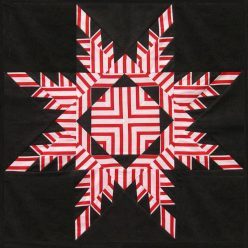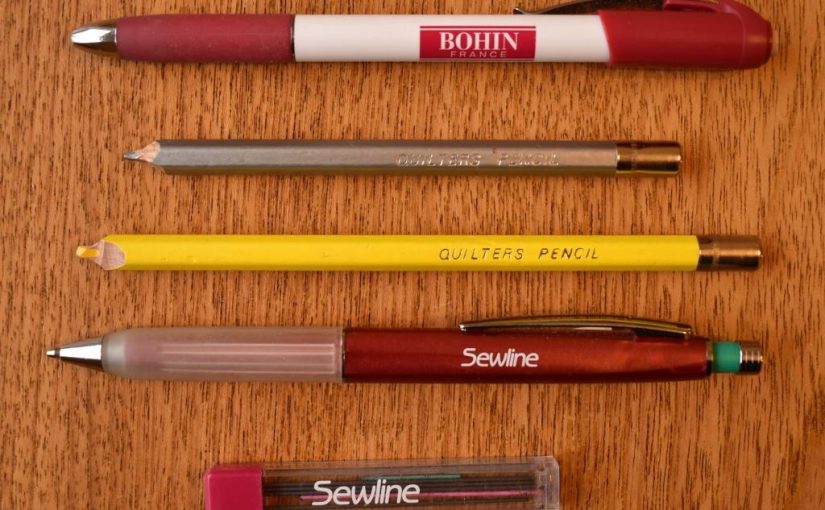The quilting design needs to be marked onto the top fabric so that you can see where to stitch. This can be done in several ways:
The ideal marker is one which shows a clear line until you have quilted along it, but then completely disappears! Inevitably, this is not always simple to achieve, so it is a good idea to test out possible markers on your chosen fabric, to make sure they can be removed afterwards.
Suitable markers to try include:
Hera marker
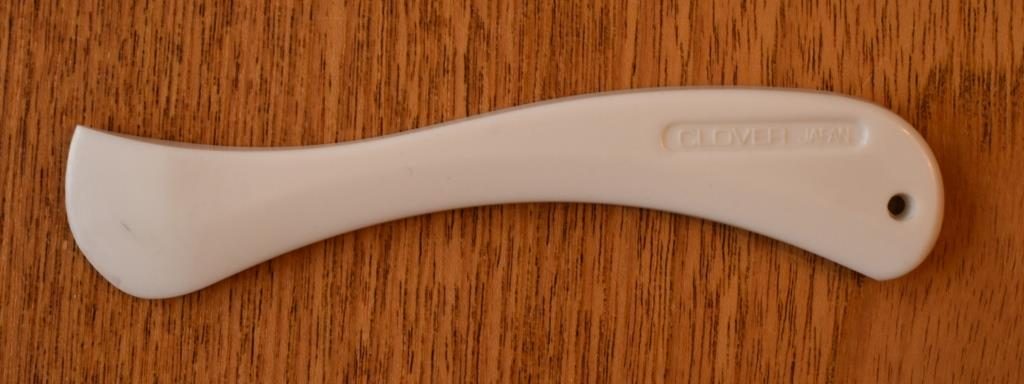
This is a kind of plastic knife which leaves a crease mark on most fabrics. It’s my favourite marker as it doesn’t need washing out afterwards. It’s particularly suitable for straight lines and gentle curves.
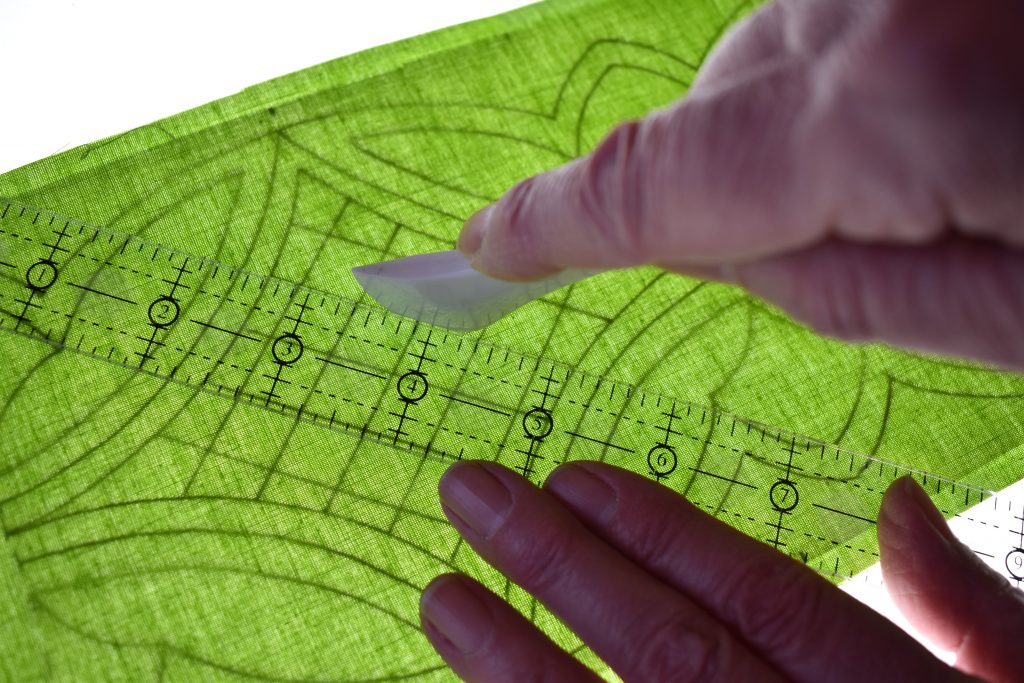
Can you see the crease mark it leaves?
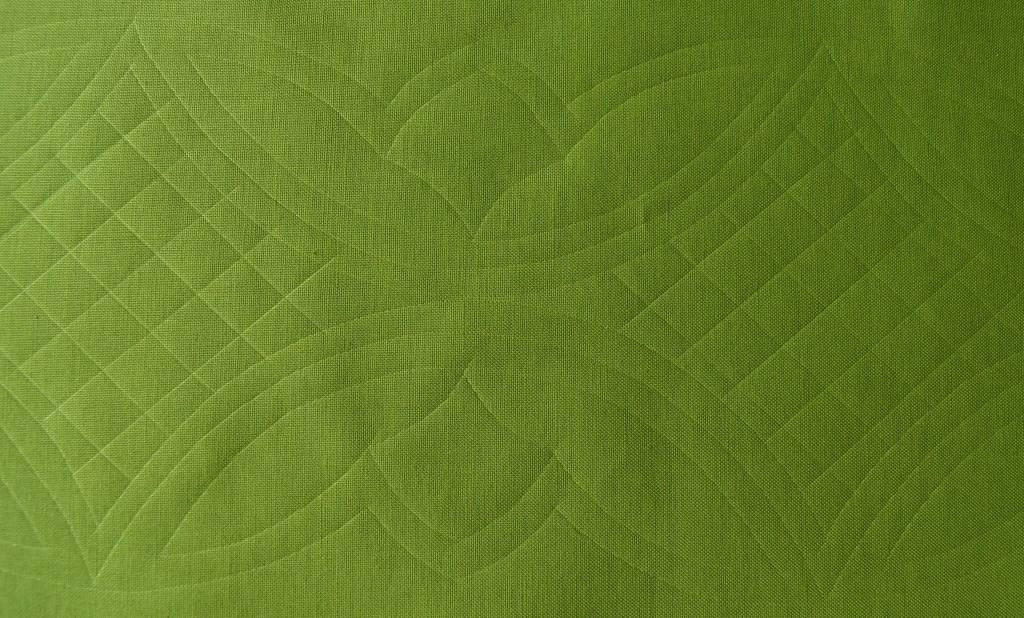
An old-fashioned, but effective forerunner of this is to use a large blunt needle. Hold it vertically, and “scratch” a line. Again, it leaves a surprisingly good crease mark – it’s easier to mark tight curves this way.
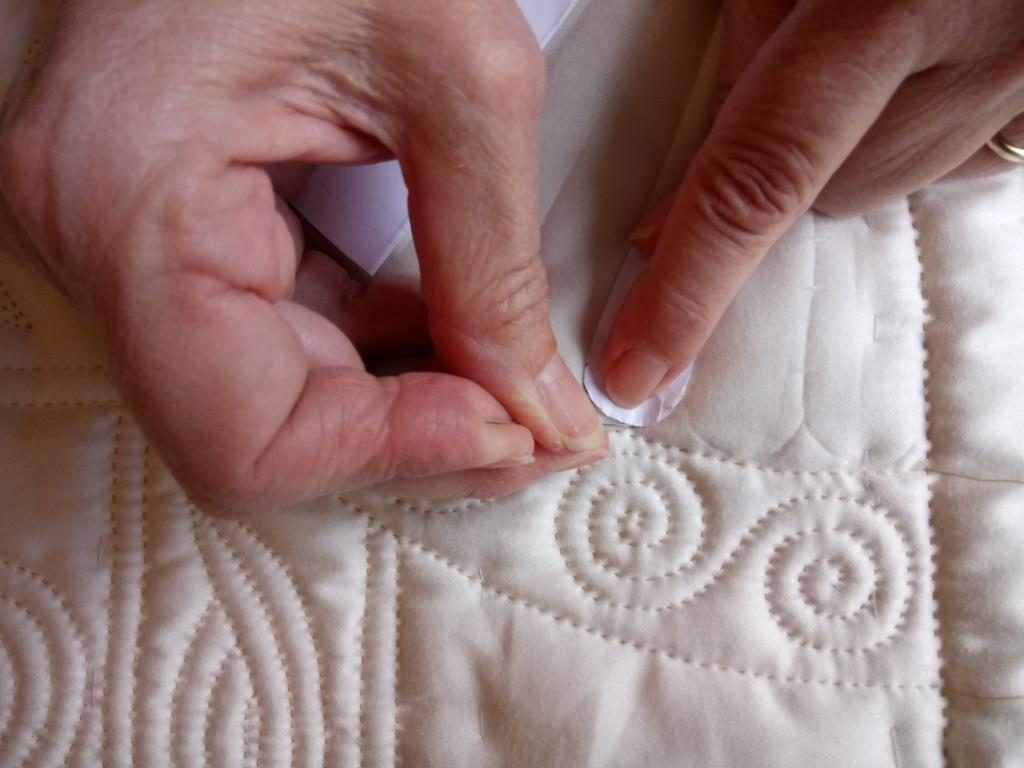
Quilter’s Pencils
These come in various colours so that you can pick one which shows up best; silver, yellow or white are good on darker fabrics
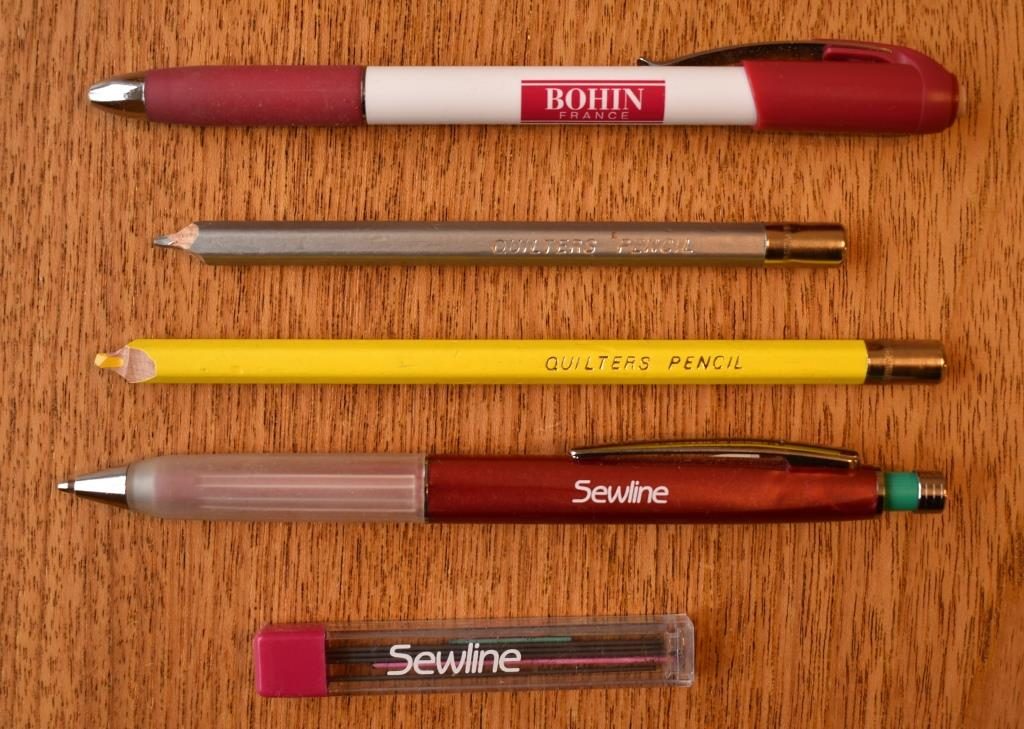
Some markers are like a propelling pencil, with fine ceramic leads. I like Bohin (white) and Sewline (various colours).
Can you see how I have sharpened the ends of these Quilter’s Pencils into a wedge?
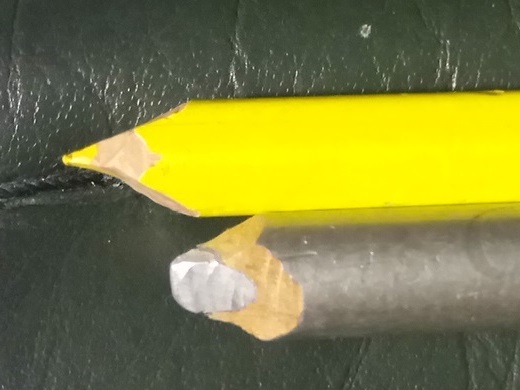
The chalky filling is quite soft, and breaks easily if sharpened with a pencil sharpener to the usual point.
Using a craft knife instead means that you can leave more width to give it strength, but still draw an accurate, narrow line.
These markers can also be used for patchwork – drawing lines down the diagonal for quick piecing half square triangles, or marking seam allowance lines for hand piecing.
Pounce
Pounce is a very old method, which is still useful for complicated stencils. A chalky powder is contained within a fabric bag (usually now in a plastic holder to avoid it getting all over your hands).
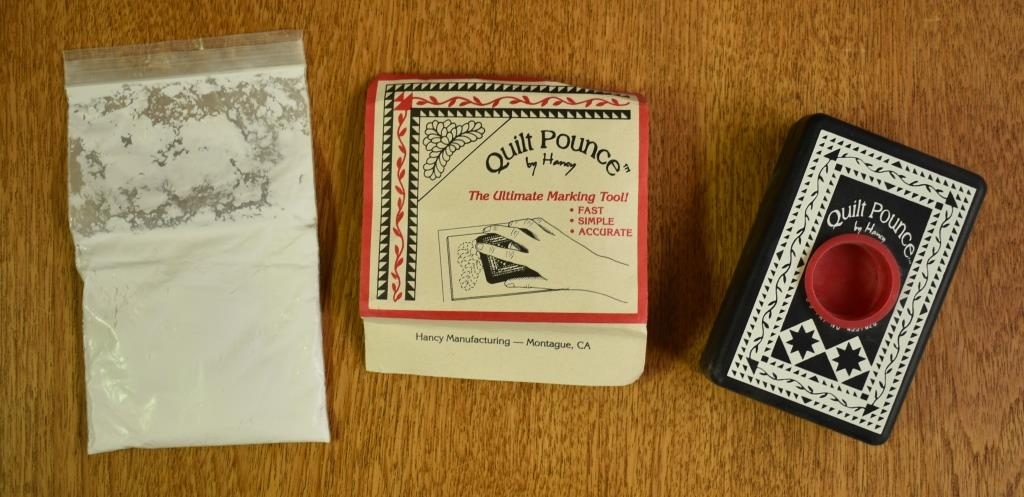
Your stencil is placed in the desired position over your layered fabric (you might like to hold it in place with masking tape), and the pounce pad is then simply swept across the stencil, leaving the chalky powder in the gaps and instantly transferring your design.
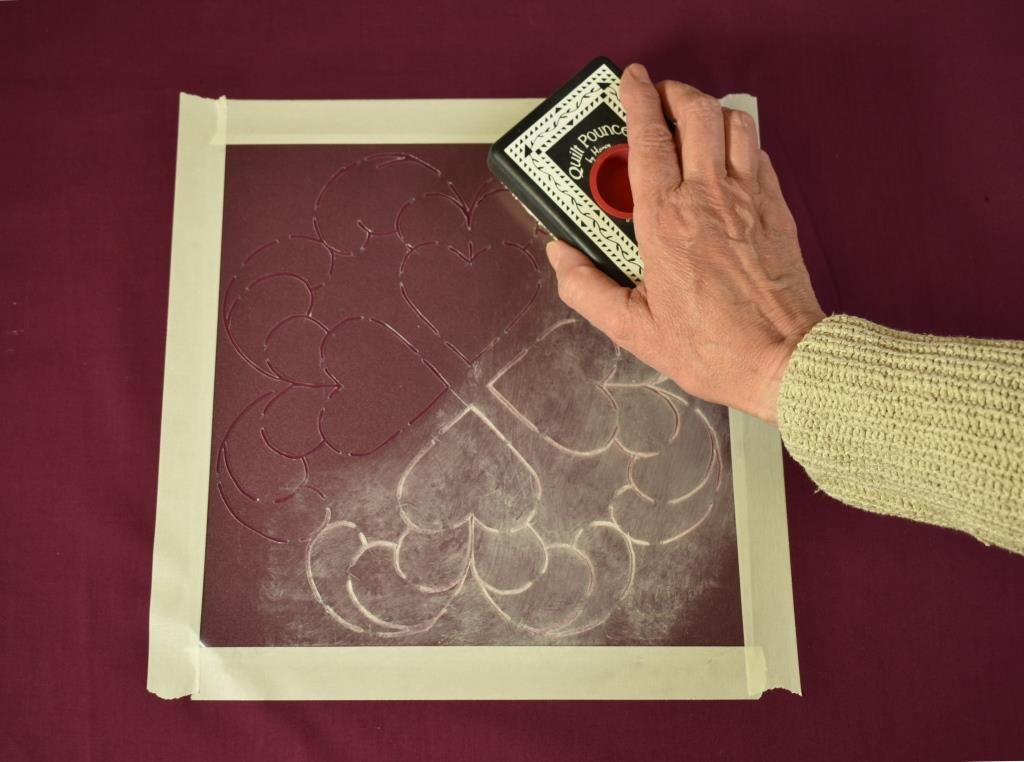
Pounce brushes off pretty quickly, so its best to go over the lines with a marking pencil before they disappear, filling in the gaps left by the stencil as you go. Alternatively, you can apparently fix it in position using hair spray or spray starch (I don’t do this because I hate the smell!)
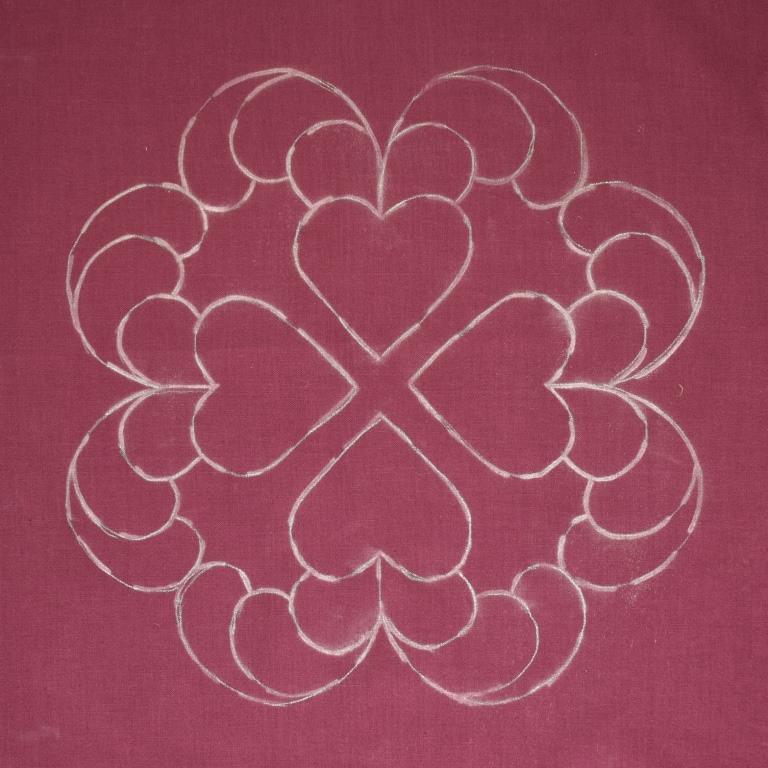
Pounce is available in white, pink or blue, so choose a colour which shows up on your fabric. As usual, test it out first – the white seems to cause no problems, but I have heard some reports that the blue doesn’t always wash out. Traditionally, cornflour was used on dark fabrics, and cinnamon on light fabrics – this would undoubtedly smell much better than hair spray, but I haven’t tried it!
Other markers
Other methods that you might like to try are thin slivers of soap, chalk pencils or roller markers.
The small pats of soap provided by hotels quickly wear down to a useful size and shape. A craft knife can be used to sharpen the edge. Soap leaves a good line on dark fabric, and of course it washes out easily!
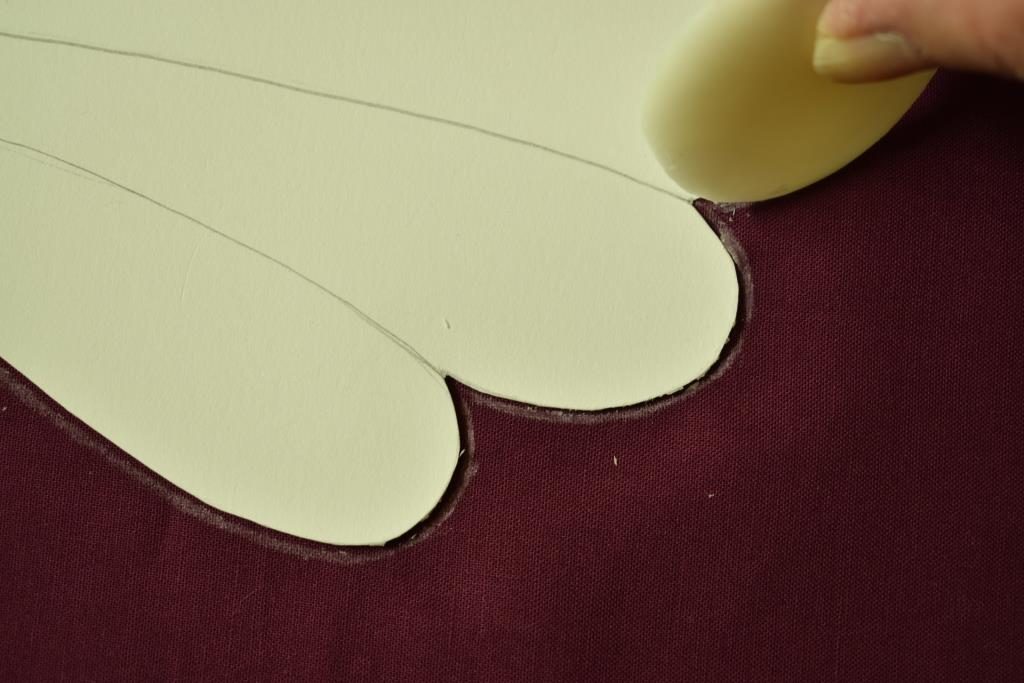
I don’t like any of the so-called disappearing pens (the purple “air erasable”, the bright blue “water erasable” or Frixion pens) – they have a nasty tendency to reappear (permanently) with temperature changes. So, I would NOT recommend these. If you must use them, make sure that you wash them out thoroughly, and avoid ironing the lines.
Other useful pages
To see more examples and information about design, click to go to Quilting.
Click on the links below to discover more about Quilting Basics.
